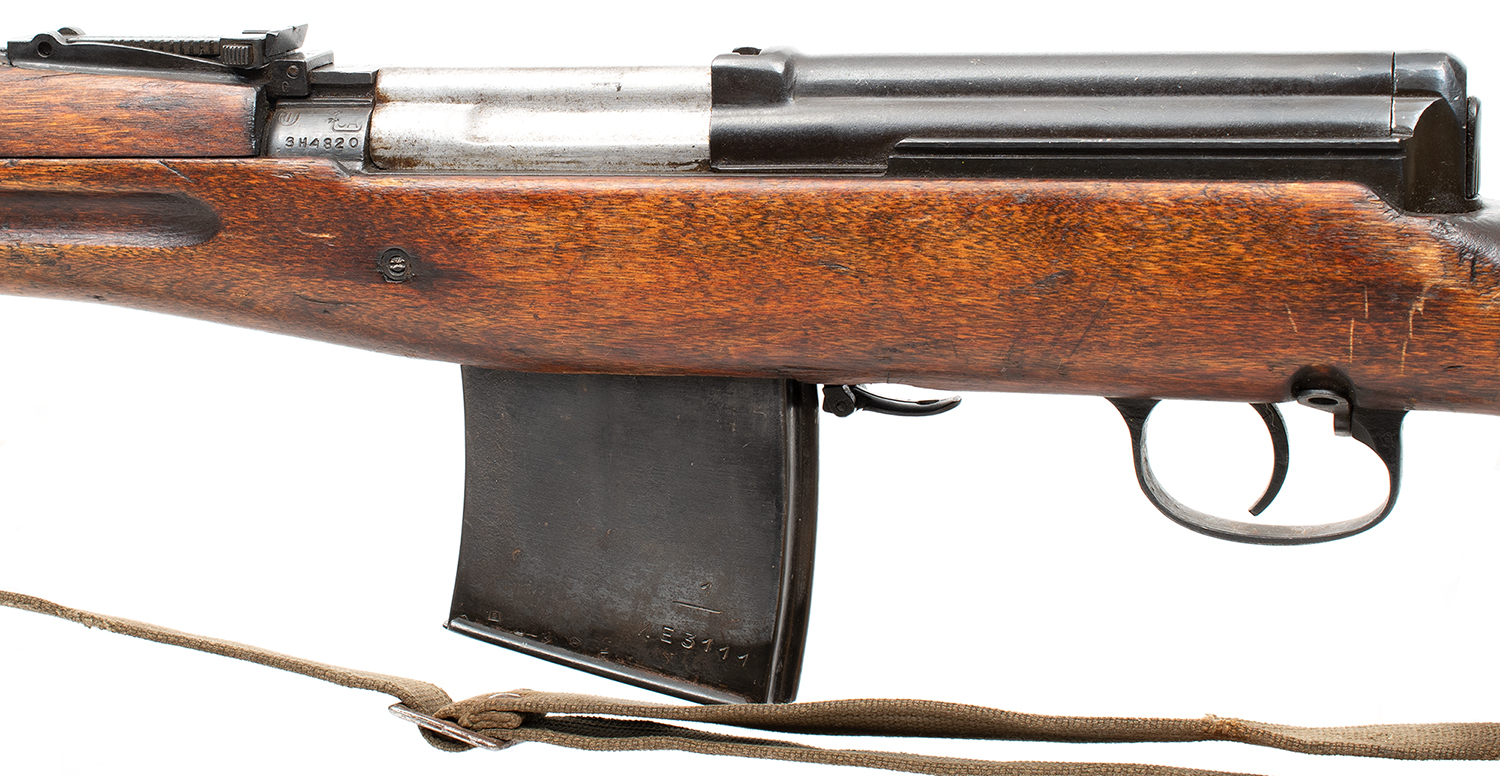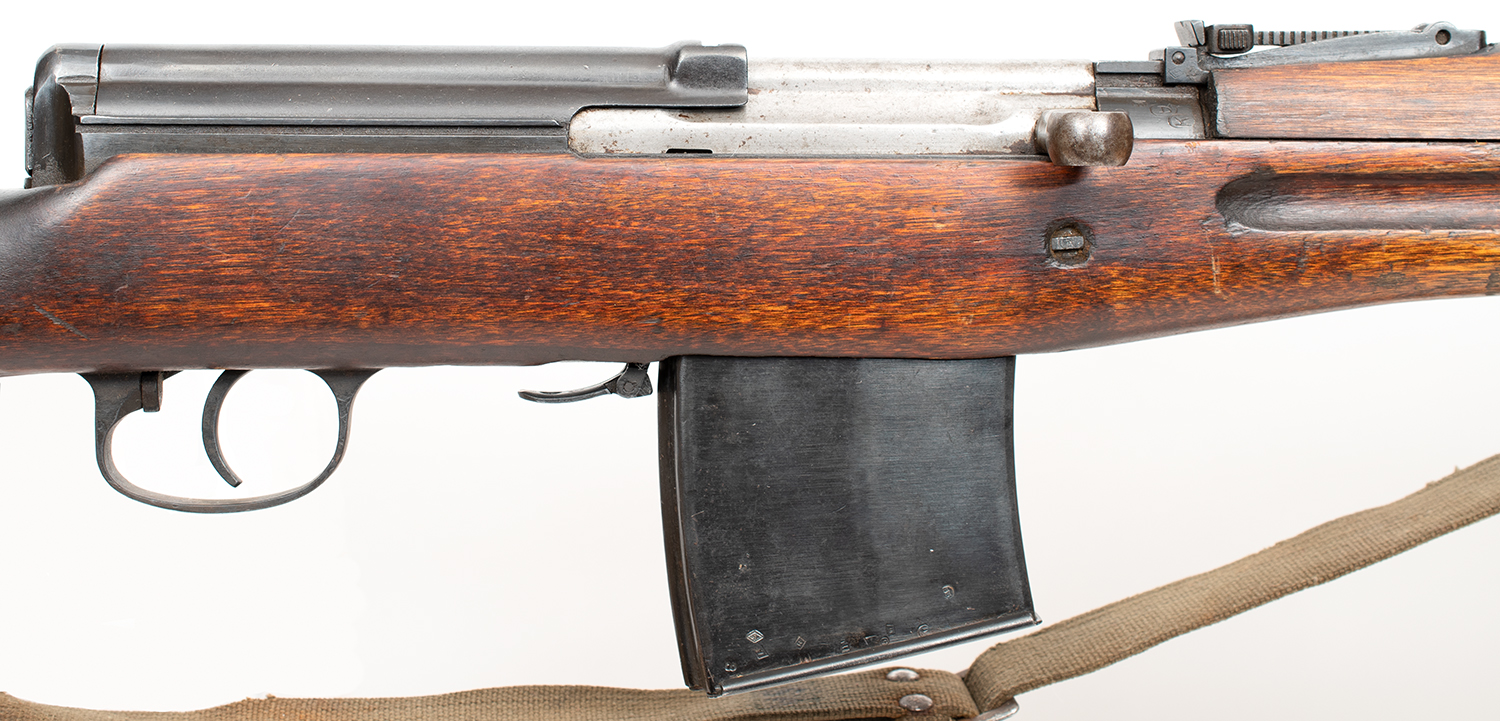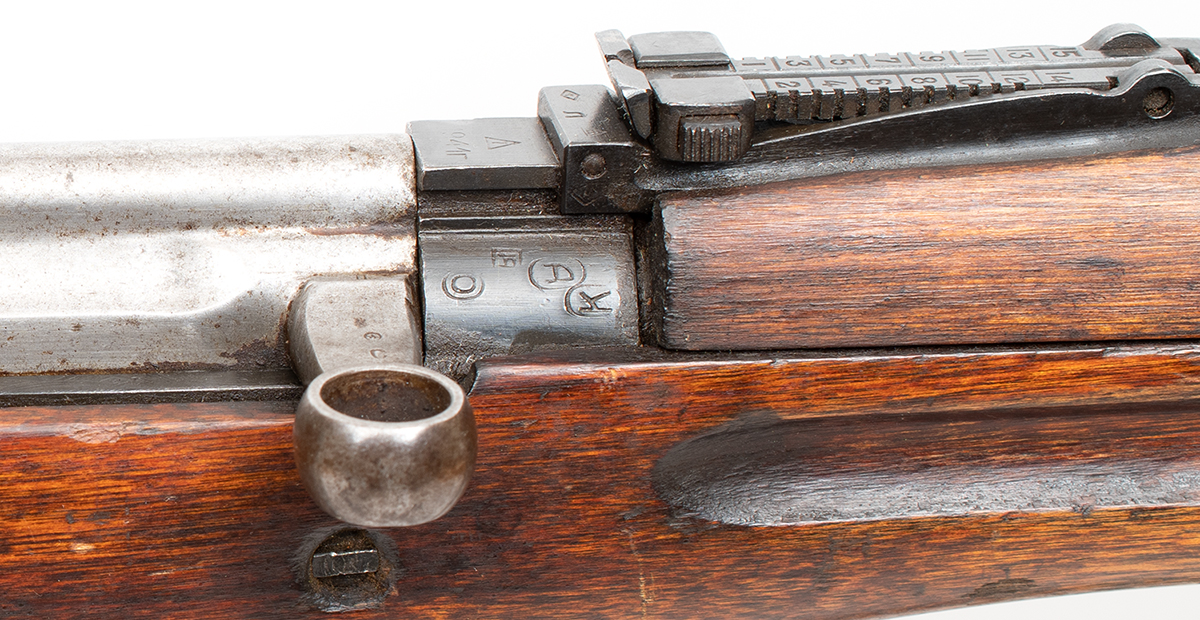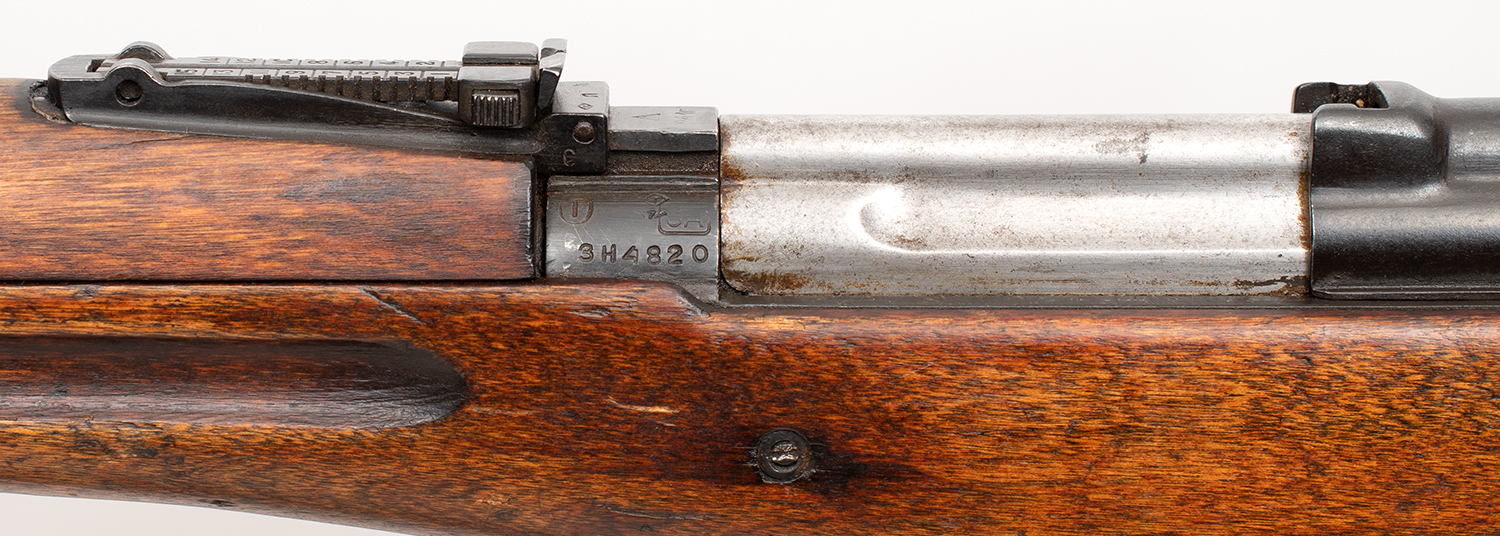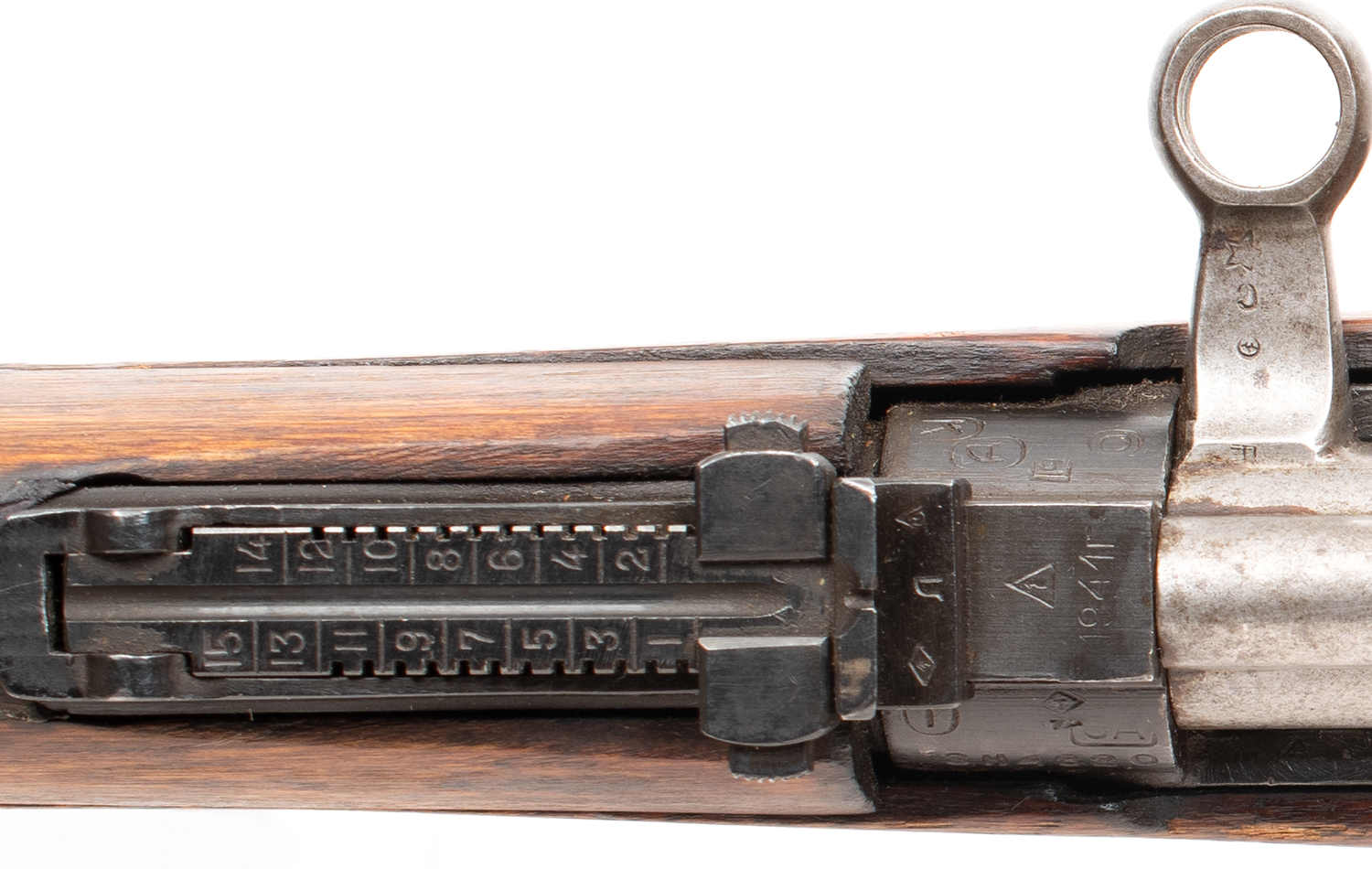Tokarev M1940 (SVT-40) production began in 1940 and improved upon the Fedor Tokarev designed SVT-38, a rifle that had demonstrated both value and shortcomings during the First Soviet-Finnish War or Winter War. A semi-automatic, Tokarev self-loading rifle Model 1940 (Samozaryadnaya Vintovka Tokareva or SVT-40) was the next step in replacing the bolt-action Mosin-Nagant M91/30 as the Soviet Army’s standard rifle.
Operation Barbarossa, the invasion of the USSR by Germany in 1941, disrupted SVT-40 production. The invasion also resulted in the capture of mass numbers of the SVT-40 rifles already produced, thereby forcing the Soviets to reinstate production of the Mosin-Nagant to recoup lost arms as the M91/30 was both cheaper and faster to produce, as well as being easier for poorly trained troops to operate. This decision, however, did not relegate the SVT-40 to the annuals of history as both the Germans and Fins readily used captured rifles (the former using the design in development of the Gewehr 43 rifle) and well over a million rifles came out of Russian factories during the war. Like the M1 Garand and other primary rifles used by the Allies, the SVT-40 continued to see use by various countries through the Vietnam War.
Highlighted here is a Finnish capture SVT-40 manufactured in June of 1941 by Factory No.74 NKV in Izhevsk. Factory No. 74 produced SVT-40 rifles in both 1940 and 1941 before receiving orders to switch to Mosin-Nagant production after the Germans executed Operation Barbarossa. The short production period along with early war manufacture makes Izhevsk SVT-40 rifles somewhat uncommon. The condition is very good and has the expected service handling marks and some finish wear. A great addition to any WWII era arms collection! See more pictures on our on our product listing for Tokarev SVT-40. We’re also offerring a SVT-40 cleaning kit for sale here: SVT-40 cleaning kit

